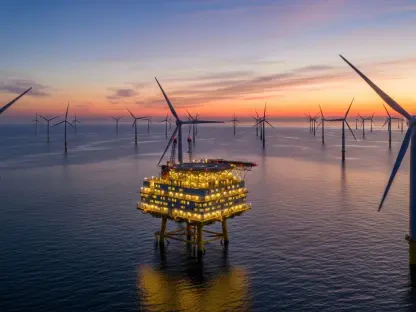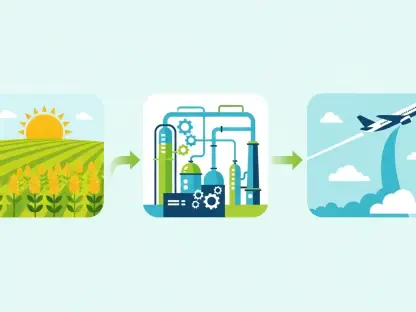Finland has made a remarkable stride in its commitment to a green transition with the closure of its Salmisaari coal power plant in Helsinki, slashing coal usage to below 1 percent of its energy mix. This move is part of an ambitious plan initiated in 2019 when the country’s parliament decided to ban coal by 2029. The accelerated efforts in clean energy, particularly wind power, have positioned Finland as a leader in the global shift toward an eco-friendly energy system.
A Pioneering Decision in 2019
The Political Will and Financial Support Behind the Transition
In 2019, Finland’s parliamentary mandate to eliminate coal usage by 2029 seemed ambitious at the time. What has driven this early success is not just the policy itself but also a potent blend of political determination and financial investment. By 2021, significant funding rounds to the tune of €22.8 million were secured for clean energy projects, spurring rapid development in the sector. This financial backing empowered energy companies like Helen Ltd. to innovate and transition away from coal much ahead of schedule. CEO Olli Sirkka of Helen Ltd. stressed that this proactive switch has led to a more flexible and cost-efficient energy system, eventually driving down energy costs for consumers as well.
The Surge of Wind Power and Decline of Coal
Wind energy has now become a cornerstone of Finland’s renewable energy framework. Since the 2020s, the country’s wind power capacity has more than doubled, accounting for an impressive 25 percent of the national electricity production. Coal generation, meanwhile, has seen a dramatic decrease of 73 percent, with the nation currently relying on only three remaining coal plants contributing a mere 0.8 percent to the energy grid. These plants are also transitioning to biomass and other cleaner alternatives, reflecting the broader strategy of diverse renewable investments. This shift illustrates Finland’s commitment to not just meeting but exceeding its environmental targets years in advance.
Environmental and Economic Benefits
Governmental and Independent Praise
Sari Multala, Finland’s Minister of Climate and the Environment, hailed the achievement as a testament to the foresight enshrined in the 2019 law. According to Multala, the transition to greener energy solutions has helped in reducing consumer energy costs and enhancing Finland’s economic resilience. Furthermore, Minna Sumelius, Executive Director of Coal-Free Finland, pointed out that the shutdown of Helsinki’s coal plants alone has successfully reduced the nation’s total carbon emissions by a staggering 5 percent. These changes have opened the door for a cleaner, healthier environment, providing quantifiable benefits that extend beyond just energy metrics.
Cautions and the Road Ahead
While the success story is compelling, environmental activists urge caution, especially regarding the reliance on biomass and the delays in nuclear projects. Cyrille Cormier of Beyond Fossil Fuels emphasized that while current transition efforts are commendable, they should not overly depend on biomass, which can have its own set of environmental issues. Instead, Cormier advocates for an increased focus on scalable renewable energies that can sustain Finland’s long-term environmental goals. The need to diversify renewable energy sources cannot be overstated as Finland continues to lead the charge for eco-friendly alternatives.
Global Context and Implications
Contrasting Efforts and International Trends
The global relevance of Finland’s model cannot be ignored. Fourteen OECD countries have already gone coal-free, and another 13 aim to phase out coal by 2030. Julia Skorupska, head of the Powering Past Coal Alliance, noted that the transition from coal to renewable sources not only supports energy security but also provides robust economic advantages. Finland’s success story thus adds credence to the argument that an early, supportive policy framework, complemented by dedicated financial resources, can accelerate the transition to a clean energy future.
The Broader Economic and Environmental Picture
Coal, traditionally valued for its affordability and reliability, has long been a substantial contributor to greenhouse gas emissions and air pollution. In contrast, wind energy offers a cleaner, more sustainable alternative with numerous environmental benefits. However, it also comes with challenges like dependency on weather conditions and sizable initial investments. Finland’s strategic and balanced approach addresses these challenges, layering financial incentives and political backing to smooth the transition.
Setting a Benchmark for Future Action
Finland has made significant progress in its dedication to a green transition by closing the Salmisaari coal power plant in Helsinki, effectively reducing coal use to less than 1 percent of its energy mix. This action is part of a bold plan initiated in 2019 when the Finnish parliament made the decision to ban coal by 2029. Accelerating its efforts in clean energy, especially with a keen focus on wind power, Finland has distinguished itself as a front-runner in the global move towards an environmentally friendly energy system. This transition not only aligns with global climate goals but also sets an example for other nations on how to combine legislative action with technological advancements to reduce reliance on fossil fuels. The country’s robust support for renewable energy reflects its broader commitment to sustainability and showcases its leadership in tackling the urgent issue of climate change. Through these actions, Finland aims to create a cleaner and more sustainable future for its citizens and the planet.









